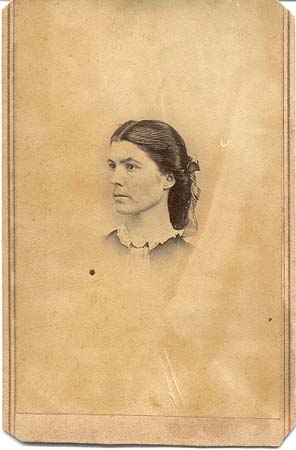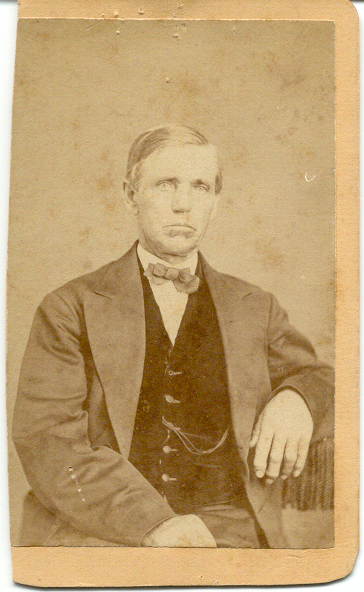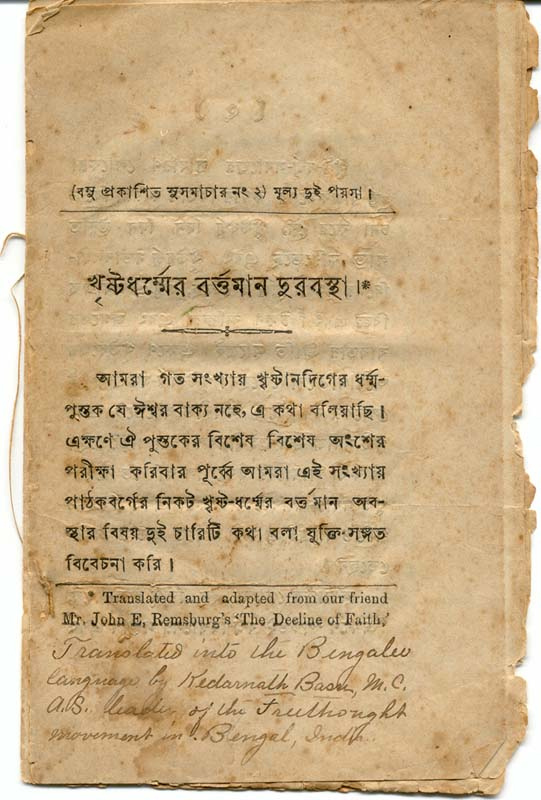Month: March 2011
-

Kalamazoo County Directory on Alphadelphia
I suppose I should look up the author, James M. Thomas, and see who he was. KALAMAZOO COUNTY DIRECTORY — WITH A — HISTORY OF THE COUNTY FROM ITS EARLIEST SETTLEMENT. CONTAINING DESCRIPTIONS OF EACH TOWN AND VILLAGE WITHIN THE COUNTY, ALSO, THE NAMES OF ALL PERSONS RESIDING IN THE SEVERAL VILLAGES IN THE COUNTY.…
-

The Log Cabin of James Noyes and Rebecca Russell
I am assuming that the house of James Noyes, mentioned below, is that of James Noyes and Rebecca Russell. From Pioneer Collections, Michigan State Historical Society: In the summer or early fall of 1829, William Toland, of Ypsilanti, came to this region, and in conjunction with Josiah Rosencranz, “broke up” eighteen acres of land, and…
-

Emery Dillingham Scagel and Eliza Betsey Henry
Only removed the yellow cast with retouching The images of E. D. SCAGEL and his wife are 2-1/4 X 3-3/4 cartes-de-vistes images which have revenue stamps on the back indicating they were taken between 1864 and 1866. The tax stamps were required during the period 1 August 1864 to 1 August 1866. They were taken…
-

George W. Chapman, Free-thinker and Co-Founder of the Cawker City Hesperian Library
Several months ago I received an email from Steven Richardson, president of the Hesperian Historical Society of Cawker City, Kansas, asking if I knew anything about a George W. Chapman’s interest in Liberal, Missouri. Chapman was a physician who gave up his practice for the making of shoes, and a geologist who donated his collection…
-

Asa Clark Briggs and Mary Ann Noyes
Mary Ann Noyes, the daughter of James Noyes and Rebecca Russell, b. 1813 Jan 16 in Ontario, Wayne, New York, married Asa Clark Briggs. They appear, from the census, to have had 5 children: James F., Jane F., Asa, John and Abbie. For some reason we’ve no photos of Mary Ann, but we do have…
-

James Noyes Originally Owned the Land Upon Which is the University of Michigan
A mention of James Noyes is found in the History of Washtenaw County, Michigan” by Chas. C. Chapman & Co., published in 1881. In August, 1827, Elisha W. Rumsey died in the house built by Mr. Osterhaut, and the tavern was occupied about this time by Oliver Whitmore. Mr. Rumsey was captain of the first…
-

1898 Ad for an Evercirculator from Liberal, Missouri
I found the below posted from Liberal, Missouri in 1898. THE PHONOGRAPHIC MAGAZINE Volume XII. January 1898, No. 1 Cincinnati, Ohio WANTED – Five or six correspondents in Benn Pitman phonography to form an evercirculator. JAMES H ROBERTS, Box 91, Liberal, Missouri So, what was an “evercirculator”? I go to an article in the Sep…
-

“The Decline of Faith” – A page from the Bengali translation from the belongings of Victor Hugo Noyes
This page from a leaflet of John E. Remsburg’s “The Decline of Faith”, noted as “translated into the Bengalee language by Kedarnath Basu M.C. a leader of the Freethought Movement in Bengal, India”, is believed to be from Victor Hugo Noyes’ travel to India pre 1886. The image is courtesy of Nancy Benton. Who was…
-

Roswell Ransom at Alphadelphia
Roswell Ransom was a stockholder in the Alphadelphia Association. A brother of his was Dr. Farnsworth Fletcher Ransom, whose wife was Elizabeth Noyes, a sister of John Humphrey Noyes who founded the The Oneida Community. My James Noyes and John Humphrey Noyes were only 4th cousins, but I still have found it interesting that Elizabeth’s…
-

Caroline Atwell Noyes’ address book
Caroline Atwell Noyes’ address book shows: J.A. Noyes Anna, Union Co., Illinois N.W. Gilbert Montpelier, Vermont Hannah M. Wolger 87 Hampshire St., Lawrence, Massachusetts Mary Chilton Franklinville, N.C. Marilla Wells Lawrence, Massachusetts Written at another time: Hannah M. Wolger No. 42 Broadway, South Lawrence, Massachusetts Francis Barry Berlin Heights, Ohio On second sheet, sometime later,…